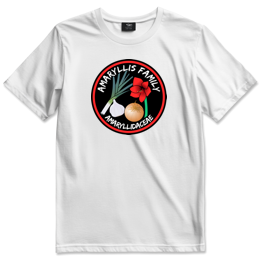Table of Contents
- How Much Water Do Vegetables Need?
- Effective Flow Rate vs. Rated Flow Rate
- How to Measure Effective Irrigation Flow Rate
- Irrigation Timing
- Irrigation Frequency
- Irrigation Duration
* Our articles never contain AI-generated slop *
Irrigation can be especially important if you garden in arid or semi-arid climates, and can also be extremely helpful during dry seasons and droughts. In this guide we'll delve into all aspects of garden irrigation, so you'll be confident that you can get your plants the water they need to thrive!

How Much Water Do Vegetables Need?
A common rule of thumb is that vegetables need 1-2" of water per week during the summer. You'll see this range cited on various websites, but there's more to it than that which we need to discuss.
First it's important to note that any recommended weekly water volume includes rainfall. This means a climate with 30" of average annual rainfall only needs to irrigate 22" of additional water per year to reach 1" per week (if that's their goal).
Disclaimer: This post may contain affiliate links. Refer to the privacy policy for more information.
We also cannot assume that 1-2" per week will be adequate in all climates. Arid climates have far higher rates of water loss through evapotranspiration than humid climates. Likewise, hotter climates lose more moisture than cooler climates.
Where I live in the Sonoran Desert, summer temperatures soar to 115F+ (46.1C+) while relative humidity levels plummet to a mere 5-10%. Direct sunlight heats pavement, soil, and plant leaves all to 150F+ (65.5C+) by day. In this climate, growers may require as much as 3-5" of water per week for vegetables, rather than the typical 1-2".

Build this infrastructure early, and it will yield dividends: saved time, water, and effort for years to come.
Effective Flow Rate vs. Rated Flow Rate
Effective flow rate is the amount of water over time which your irrigation actually emits in practice. This is often different than the rated flow rate.
Irrigation systems usually have rated flow rates which may be achieved only in ideal conditions. This relies on a specific PSI being maintained across the system, on emitters not being calcified or blocked, on no leaks, on no added friction (such as from hole-punching tubing), and on no mineralization in the lines.
Over time as lines and emitters become mineralized and clogged, as leaks and inefficiencies become present, effective flow rate will drop below rated flow rate.
For this reason, measuring your actual effective flow rate is critical if you want to calculate water needs and application rates. Do not use rated flow rates for your calculations - they will rarely ever be accurate.
Join The Grower's Community
Whether you cultivate vegetables, house plants, succulents,
mushrooms, flowers, cannabis, or more...
you're welcome here 🌱
Check It Out!
How to Measure Effective Irrigation Flow Rate
Effective flow rate from irrigation is usually measured using one of two methods:
- Monitoring a water submeter, and dividing by the number of emitters in the system
- Isolating emitters and collecting the water over a known period of time.
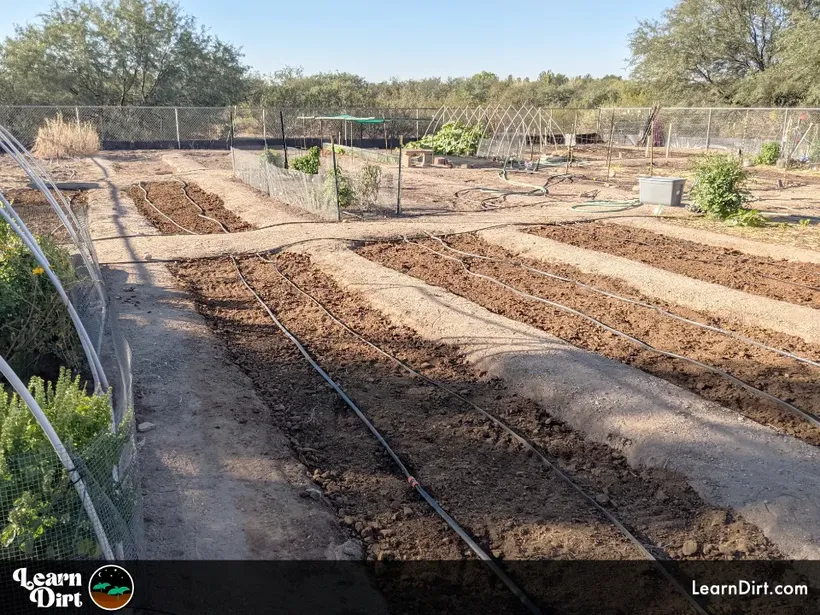
#1 Monitoring Water Submeter
This option is viable only if your irrigation system is on a separate water submeter from any other water usage.
Bonus points if your different garden zones are on different submeters, so gauge more granularly how your irrigation use varies across the land.
#2 Isolating Emitters
For drip lines, this may look like:
- Putting a collection dish under various emitters
- Running the drip lines for an exact known period of time, such as 5 minutes
- Measuring the volume of water collected from each emitter.
- Averaging the volume of water from each emitter
- Multiplying the average volume of water per emitter by the total number of emitters
- Multiplying the average total volume of water across all emitters by the amount of daily run time the emitters are set for
Let's take a look at an example to see how this works:
1. First, place 1 collection dish under each of various emitters across the system. The goal here is to get enough of a sample size that your calculations will yield the most accurate results possible. There will always be some margin of error, however it is reduced the more collection dishes you put out and emitters you test.
2. Choose a duration of time to run the irrigation system, and time it exactly. Let's say 5 minutes. Run your irrigation for the chosen duration, and turn it off or remove your collection tray(s) when the timer goes off.
Using a shorter time duration will reduce accuracy, just as a smaller sample size will reduce accuracy. Longer time durations and more collection trays / emitters will give the most accurate results.
3. Measure the volume of water collected from each emitter. While a graduated cylinder will give you a rough number of mL, I prefer a gram scale for increased precision.
Remember that 1g of water will equal 1mL of water (on Earth, at sea level, at 32F). While this ratio does change slightly at different temperatures and elevations, the variation is so negligible that we can safely assume 1g of water = 1mL for our purposes here. From this you can convert water weight from grams, to any volumetric measurement.
1 gallon of water, at 32F, at sea level = 3785.4g
4. After collecting and weighing the water from each emitter, punch them all into a spreadsheet or calculator and average them together. This is your average effective irrigation volume per emitter, over the allotted time period.
Let's assume for this example that when you average the weight of the water from each emitter across all the emitters you test, you find the average is 157.7g. That means each emitter in your system, on average, emits 157.7 grams of water in 5 minutes.
When you multiply 157.7g by 12 to convert the 5 minute duration into 1 hour, you get 1,892.7g. Each emitter in your system, on average, emits 1,892.7 grams of water per hour.
When you divide the average water weight emitter per hour into the weight of a gallon of water (3785.4g) you get 0.5 or 1/2 gallon. (1892.7g / 3785.4g ≈ 0.5 gallon)
This means that each emitter in your system is averaging 0.5 gallon per hour of runtime. Perhaps your drip lines are rated at 0.6 gph per emitter. Your measurements here highlight the 16.6% reduced effective flow rate as compared to the rated flow rate. This is why measuring effective flow rate is important.
5. You can then multiply 0.5 gallons by the total number of emitters in your irrigation system. If you run 10 spaghetti lines of 100ft each, with emitters every 6", you've got 2,000 emitters.
6. If each emitter provides 0.5 gph and your system has 2,000 emitters, you know every hour of runtime will irrigate 1,000 gallons across your system. You could say your system has an effective flow rate of 1,000gph across all your square footage.
Adjust this number to the daily timing duration that your irrigation runs for in order to estimate the daily water usage.
Dig Cool Merch?
If you run your irrigation for 45 minutes a day, that looks like:
(45 / 60) * 1,000gph ≈ 750 gallons per day.

Calculating Inches of Water
Inches of water is a great measurement for irrigation because it measures how a volume of water is spread across an area of land.
Rather than just telling us that 1,000 gallons was irrigated in 1 hour, inches of water tells us about the volume of water that each square inch of our land received. This is much more useful for understanding how much moisture plants actually receive.
Inches of water is also the same format as rainfall is measured in, so measuring your irrigation in this format allows for easy addition of rainfall to gauge total water received across your gardens or fields.
Let's do some math:
To calculate inches of water from gallons and square footage, we need to convert the gallons into cubic inches. 1 gallon = 231 cubic inches.
Then we need to convert the square footage into square inches. 1 square foot = 144 square inches.
Here's the formula:
Inches of water = (Gallons × 231) / (Square feet × 144)
Example:
if you're irrigating 800sq ft with 1,000gph of water, that's:
(1000 × 231) / (800 × 144) ≈ 2.0 inches
Compare this to the numbers in the How Much Water Do Vegetables Need? section above.
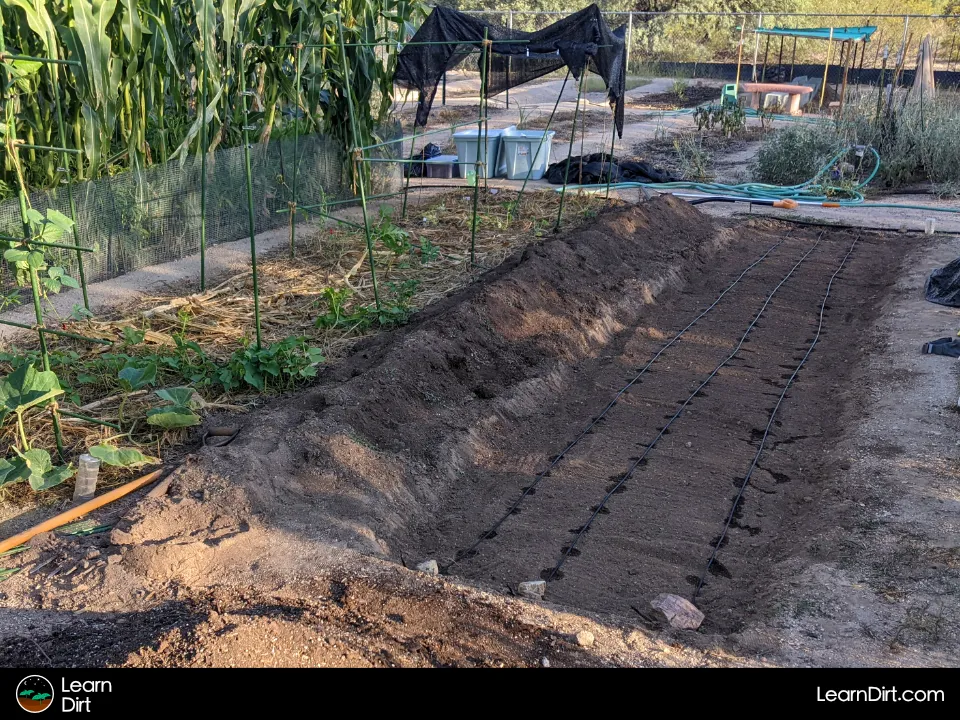
Irrigation Timing
Irrigation timing should be chosen based mainly on two factors:
- Avoiding heat
- Avoiding freezing
Let's take a look at the reasoning behind this:
Avoiding Heat
When the days are hot (summer Northern hemisphere, winter Southern hemisphere) the rate of evaporation increases. Watering during the heat of the day may result in more water lost to evaporation before it's able to infiltrate into the soil. This effect becomes even more pronounced with overhead watering.
Overhead watering at hot times of the day may also cause light burn on leaves from the magnification and refraction properties of water droplets.
During the hot season it's best to water before the sun is high, and / or after it has gone down.
Avoiding Freezing
Freezing temperatures may cause ice in irrigation systems and lines.
During the cold season, aim to run your lines only when temperatures are above freezing so water can move freely.
Where I live, winter nights occasionally dip below freezing. Waiting until the sun has been up for a few hours before running irrigation helps to ensure that the lines are thawed.
Irrigation Frequency
Irrigation Duration
That's all for now, thanks for reading!
If you have any questions, comments, or would like to connect with fellow gardeners, head on over to the forum and post there.








![Black Dirt Live Again [Green]](/media/product_images/black-dirt-live-again-[green]_sticker_260x260.png)



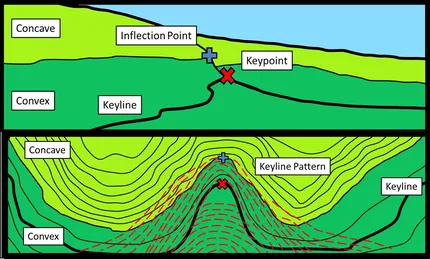




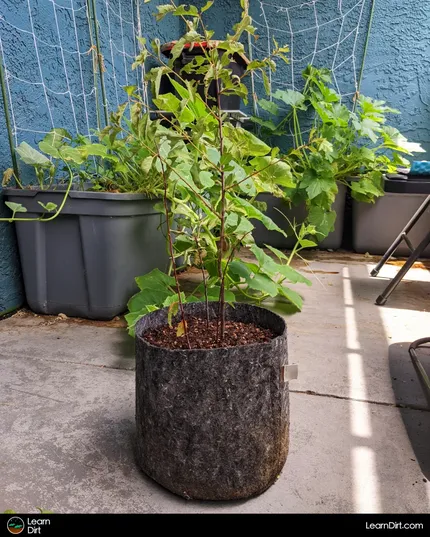






![Black Dirt Live Again [Green] T-shirt](/media/product_images/black-dirt-live-again-[green]_shirt_260x260.png)
